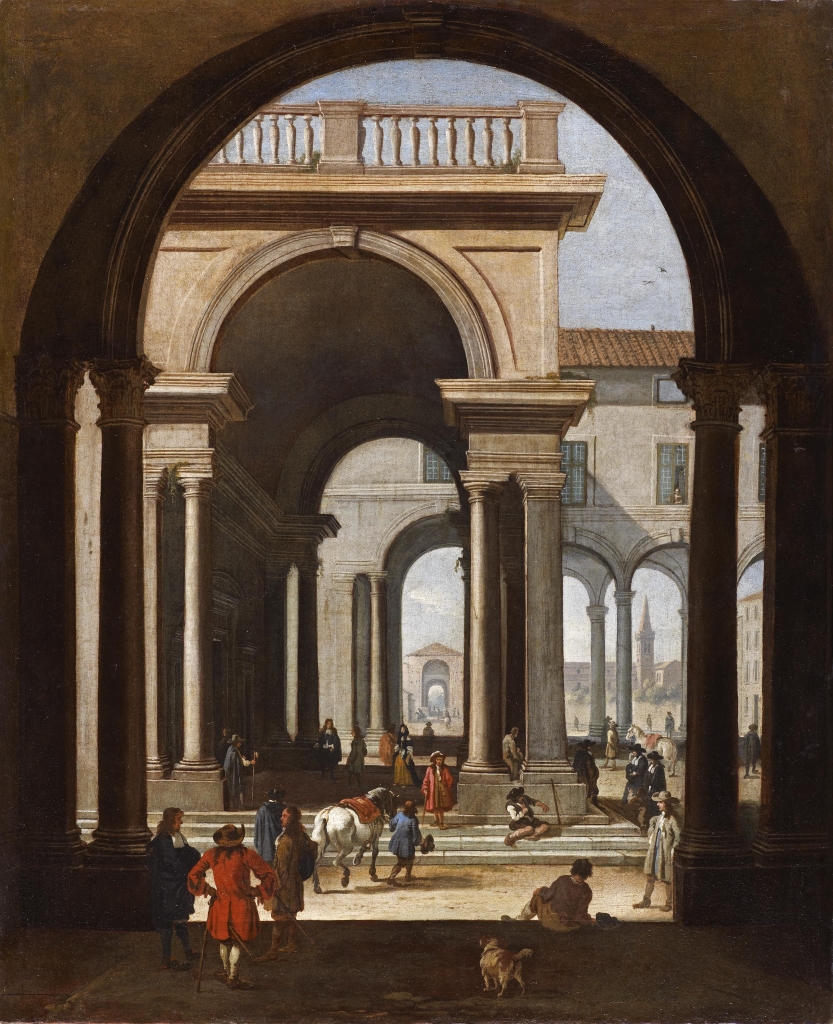Niccolo Codazzi
1648 – 1693
An Architectural Capriccio

Medium:
Oil on Canvas
Category:
Dimensions:
98.5(h) x 80.5(w) cms
Framed Dimensions:
120(h) x 99(w) cms
Essay:
Born in Naples, Niccolo Codazzi would have spent most of his early life in Rome and is likely to have trained in the studio of his father, Viviano Codazzi. Just like his father he predominantly painted architectural scenes, capricci and ruins. He is also likely to have only painted the architecture, leaving the figures to be added by different artists. Research shows that Codazzi worked with some important painters, notably René-Antoine Houasse, Gregorio de Ferrari, Paolo Piola and Gian Gioseffo del Sole.
He is known to have been in Rome from 1675 and living near the church of San Macuto and is recorded as the painter for the piano nobile of the Palazzo Altieri al Gesù. A key influence must have been the Forum of Rome as we can see from pictures such as “A view of the Arch of Constantine” (Private Collection). Codazzi is a typical painter of the Counter Reformation and the strong chiaroscuro in his work is very much part of the tradition. Indeed, it is believed that Codazzi was nicknamed the “little Caravaggio” by Pietro Longhi. The subject matter and style of his painting show the growing popularity of Classical Rome with collectors in the 17th century. Despite this, competition was fierce and as a result Codazzi left Italy for France working mainly in Paris and Provence. He gained some notoriety in Paris and with the help of Charles Lebrun was accepted into the Académie Royale in 1682. He is presumably the Codazzi mentioned as collaborating with Houasse on four large architectural pictures on the grand staircase of the Queen at Versaille. These now reside in the Louvre (INV 8970 & 8971). Shortly after this he returned to Italy.
In 1688 he was in Genoa and many of his collaborative works are mentioned in important patron's inventories there. He was buried in the now destroyed San Vito alla Foce.
David R. Marshall has confirmed the attribution of the painting to Niccolò Codazzi and dates it to around 1670. While the composition is an unusual one and the large empty plaza with a church tower in the background is a new motif for him, the treatment of the architectural forms is undoubtedly by his hand.
Provenance:
Private Collection, Austria